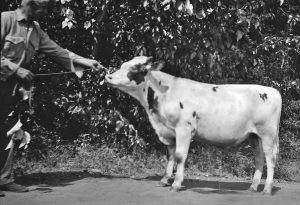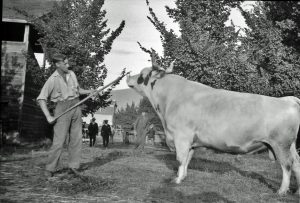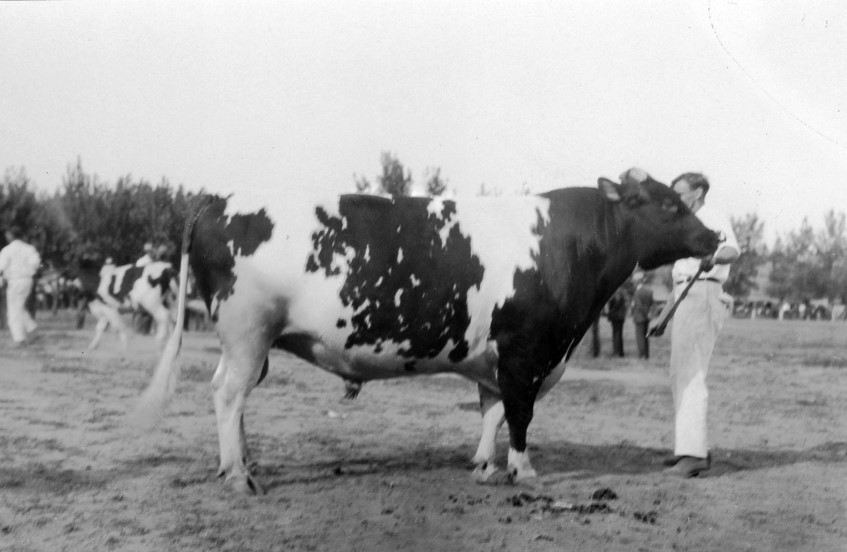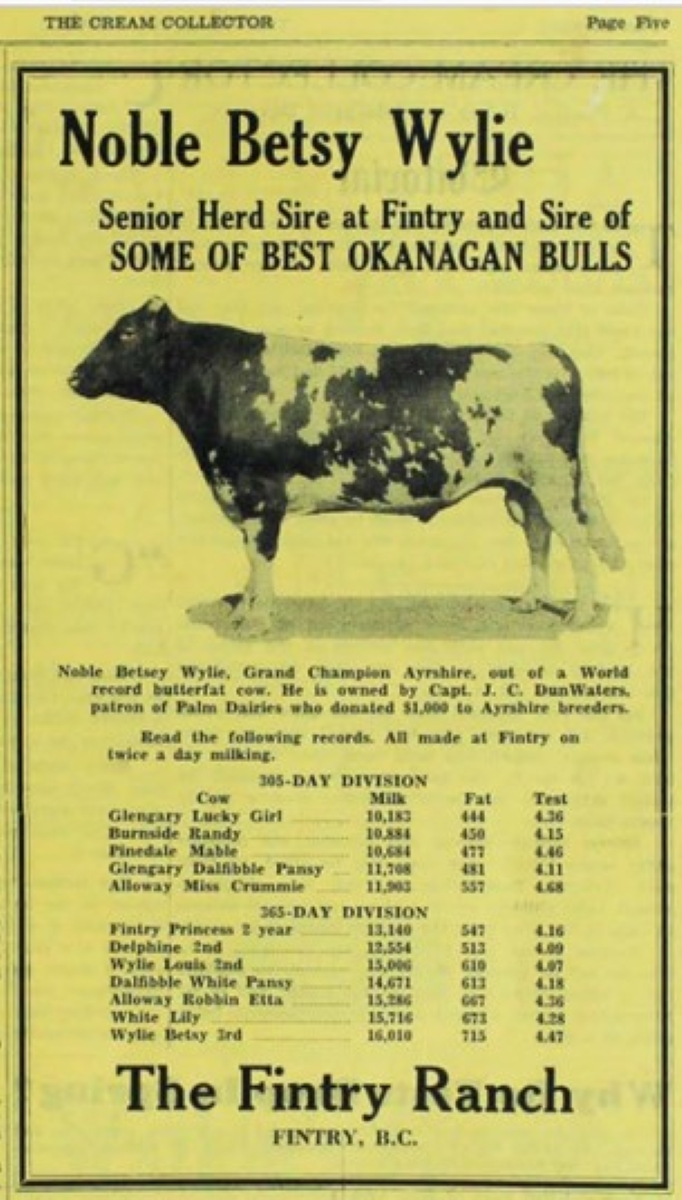The Ayrshire Bulls
Bulls are big, and can at times be dangerous. The bulls of the beef breeds are usually of a placid nature and in general easily handled. The dairy bulls however are known for being aggressive to the point of posing a threat to those who have to work with them.
Today, injuries from bulls are less frequent as breeding is now done by artificial insemination. This eliminates the need for bulls to be present in the farmyard.
“Chapmanton Indicator” was the formal name of the first bull that Dun‑Waters acquired. He was bred in Scotland and brought to Canada in 1921. He was the first in a series of high-quality bulls at Fintry, which later included the more famous bull, “Noble Betsey Wylie.” (These curious names are the result of using names from the bull’s ancestry). Around the Fintry farm, this bull was simply called “Noble,” and as far as we know, neither he nor any of the other bulls were involved in any accidents.
The Fintry bulls were only handled by the experienced farm workers who were equipped with stout wooden rods that clipped onto the nose-rings of the bulls. These made it possible to push as well as pull when the bull needed to be handled at close quarters.





